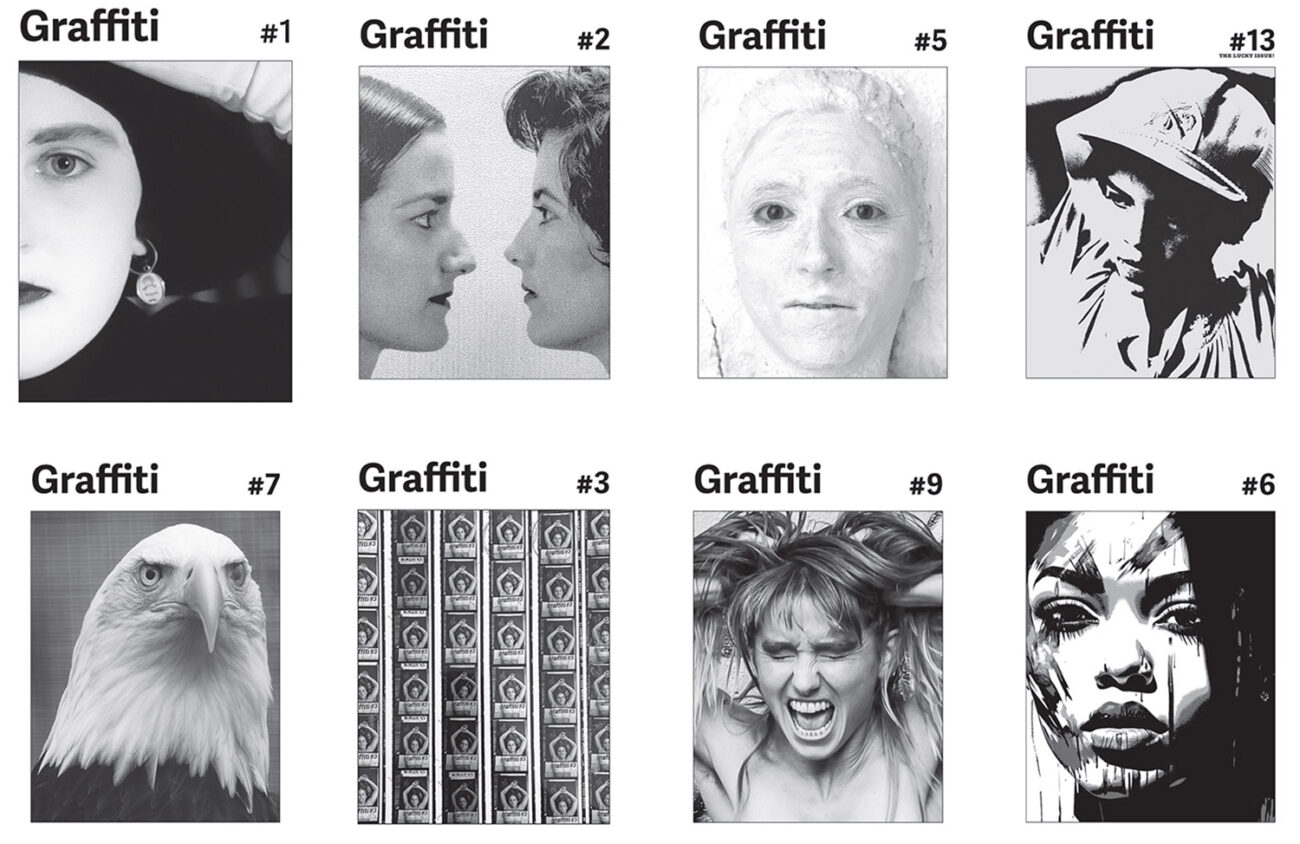“In Graffiti anything goes,” says founder and publisher Don Root. Root is right. Similar to the art you’ll find spray-painted under an overpass, Graffiti is equally unpretentious as it is impressive. The alternative zine has no editor and accepts just about everything — as long as it doesn’t break copyright or libel laws.
“We don’t do themes, which I like because you never know what you’ll get,” Root says of zines that are based off of a prompt or idea. “But it’s always a little bit of everything.”
Flipping through a copy of the zine you’ll find anything from a poem about a fat black crow to a woman’s reasoning for why she got an abortion. Even the masthead is consistently inconsistent, with last month’s issue replacing job titles with celebrities like Taylor Swift and Travis Kelce.
“It’s like spraying words on paper more or less, you know?” Root says. “Some of it is really artful and some of it trash. I’ll let the reader decide what’s good.”
Root, a retired writer and editor at publications such as the international travel guide Lonely Planet and the now-defunct Lane Monthly, started the zine in January 2023 out of what he says was boredom and a desire to help cultivate the arts scene in Eugene.
Since its inception, Graffiti has published 13 issues, amassed advertising from Eugene staples in the community such as the Eugene Art House and Caffé Pacori, and has managed to print monthly without breaking the bank.
“We’re finally getting to the point where it pays for itself,” Root says. He adds that through donors and ad support, the paper can print on a monthly basis. The zine recently incorporated as an Oregon public benefit corporation, but is still working on becoming a 501c3 so donations can be made tax free.
“If we obtain 501c3 status, we could get grant money and pay for the zine a year in advance instead of being issue to issue,” Root says. “As long as it pays for itself, though, I’m happy.”
Graffiti uploads former issues of the zine online as well as longer pieces that don’t fit in print, but Root is adamant about maintaining a mostly print presence. He says of online reading, “I think there’s something missing there. To be able to sit down with a paper and leisurely peruse it. Probably better for your eyes, I suppose.”
While Root says he finds value in print, he’s having a little bit of trouble luring younger audiences and contributors to hop on board. He says that he “broke down” and started an Instagram in March of last year to try and appeal to younger folks.
In the meantime, Root says he’s going to continue dropping off the zine at University of Oregon’s campus and look to the “20-something” on staff, Jordan Howell Rose, for ideas to reach the youth in Eugene’s arts scene.
Graffiti’s most recent issue, 13, hit the streets Wednesday, April 24, and can be found all across downtown Eugene and the Whiteaker. “I don’t know if Graffiti reflects the arts scene in Eugene, but it might be a nice piece in the whole quilt of the arts scene in Eugene,” Root says. “Which makes me happy.”
